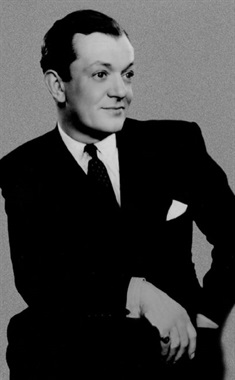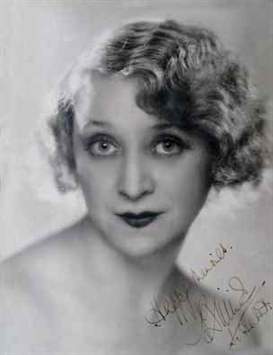Related Research Articles

"Time Warp" is a song featured in the 1973 rock musical The Rocky Horror Show, its 1975 film adaptation The Rocky Horror Picture Show, and a 2016 TV production. The name is also used for the dance performed during the chorus of the song. The song is both an example and a parody of the dance song genre, with much of the lyrics consisting of dance step instructions. This dance is one of the major audience-participation activities during screenings of the film and performances of the show. It has become a popular song beyond the reaches of the film and show, and is often played at dances and weddings.
Julie Covington is an English singer and actress, best known for recording the original version of "Don't Cry for Me Argentina", which she sang on the 1976 concept album Evita.

Bobby Howes was a British entertainer who was a leading musical comedy performer in London's West End theatres in the 1930s and 1940s.

"Singin' in the Rain" is a song with lyrics by Arthur Freed and music by Nacio Herb Brown. Introduced by Doris Eaton Travis in The Hollywood Music Box Revue, then months later by Cliff Edwards and the Brox Sisters in The Hollywood Revue of 1929, the song was subsequently recorded by many contemporary artists.
"Memory" is a show tune composed by Andrew Lloyd Webber, with lyrics by Trevor Nunn based on poems by T. S. Eliot. It was written for the 1981 musical Cats, where it is sung primarily by the character Grizabella as a melancholic remembrance of her glamorous past and as a plea for acceptance. "Memory" is the climax of the musical and by far its best-known song, having achieved mainstream success outside of the musical. According to musicologist Jessica Sternfeld, writing in 2006, it is "by some estimations the most successful song ever from a musical."

James Sidney Jones, usually credited as Sidney Jones, was an English conductor and composer, who was most famous for composing the musical scores for a series of musical comedy hits in the late Victorian and Edwardian periods. Jones's most famous musical was The Geisha, but several of his pieces were among the most popular shows of the era, enjoying long runs, international tours and revivals.
Mr Cinders is a 1928 musical with music by Vivian Ellis and Richard Myers and a libretto by Clifford Grey and Greatrex Newman. The story is an inversion of the Cinderella fairy tale with the gender roles reversed. The Prince Charming character has become a modern (1928) young and forceful woman, and Mr Cinders is a menial.

The Black Crook is a work of musical theatre first produced in New York City with great success in 1866. Many theatre writers have cautiously identified The Black Crook as the first popular piece that conforms to the modern notion of a musical. The book is by Charles M. Barras. The music, selected and arranged by Thomas Baker, consists mostly of adaptations, but it included some new songs composed for the piece, notably "You Naughty, Naughty Men". The story is a Faustian melodramatic romantic comedy, but the production became famous for its spectacular special effects and skimpy costumes.

Beatrice "Binnie" Mary Hale-Monro was an English actress, singer and dancer. She was one of the most successful musical theatre stars in London in the 1920s and 1930s, able to sing leading roles in operetta as well as musicals, and she was popular as a principal boy in pantomime. Her best-remembered roles were in the musicals No, No, Nanette (1925) and Mr. Cinders (1929), in which she sang "Spread a Little Happiness".

"Happy Talk" is a show tune from the 1949 Rodgers and Hammerstein musical South Pacific. It is sung by Bloody Mary to the American lieutenant Joe Cable, about having a happy life, after he begins romancing her daughter Liat. Liat performs the song with hand gestures as Mary sings.
Vivian John Herman Ellis, CBE was an English musical comedy composer best known for the song "Spread a Little Happiness" and the theme "Coronation Scot".

George Grossmith Jr. was an English actor, theatre producer and manager, director, playwright and songwriter, best remembered for his work in and with Edwardian musical comedies. Grossmith was also an important innovator in bringing "cabaret" and "revues" to the London stage. Born in London, he took his first role on the musical stage at the age of 18 in Haste to the Wedding (1892), a West End collaboration between his famous songwriter and actor father and W. S. Gilbert.
In Town is a musical comedy written by Adrian Ross and James T. Tanner, with music by F. Osmond Carr and lyrics by Ross. The plot of In Town, though thin, is a smart tale of backstage and society intrigue. One of the popular songs from the show was "The Man About Town".

Kurt-Friedrich Gänzl is a New Zealand writer, historian and former casting director and singer best known for his books about musical theatre.
"Am I Blue?" is a 1929 song copyrighted by Harry Akst (music) and Grant Clarke (lyrics), then featured in four films that year, most notably with Ethel Waters in the movie On with the Show. It has appeared in 42 movies, most recently Funny Lady, The Cotton Club and Downton Abbey: A New Era, and has become a standard covered by numerous artists.
"Ain't Misbehavin'" is a 1929 stride jazz/early swing song. Andy Razaf wrote the lyrics to a score by Thomas "Fats" Waller and Harry Brooks for the Broadway musical comedy play Connie's Hot Chocolates.

Edwardian musical comedy was a form of British musical theatre that extended beyond the reign of King Edward VII in both directions, beginning in the early 1890s, when the Gilbert and Sullivan operas' dominance had ended, until the rise of the American musicals by Jerome Kern, Rodgers and Hart, George Gershwin and Cole Porter following the First World War.

Percy Anderson was an English stage designer and painter, best known for his work for the D'Oyly Carte Opera Company, Sir Herbert Beerbohm Tree's company at His Majesty’s Theatre and Edwardian musical comedies.

La fille de Madame Angot is an opéra comique in three acts by Charles Lecocq with words by Clairville, Paul Siraudin and Victor Koning. It was premiered in Brussels in December 1872 and soon became a success in Paris, London, New York and across continental Europe. Along with Robert Planquette's Les cloches de Corneville, La fille de Madame Angot was the most successful work of the French-language musical theatre in the last three decades of the 19th century, and outperformed other noted international hits such as H.M.S. Pinafore and Die Fledermaus.

"Gimme Dat Ding" is a 1970 popular UK song, of the novelty type, sung by "one-hit wonder" The Pipkins, and written and composed by Albert Hammond and Mike Hazlewood. Released as a single, it is the title selection of an album which The Pipkins recorded and released on the EMI Columbia Records label. It also appeared on a compilation album of the same name, which The Pipkins shared with another up-and-coming UK group, The Sweet. It has also been included on many other compilation albums. "Gimme Dat Ding" was arranged by Big Jim Sullivan.
References
- 1 2 Gänzl and Lamb, pp. 131–132
- ↑ "Adelphi Theatre", The Times, 12 February 1929, pg. 12
- ↑ Gordon and Jubin, p. 179
- ↑ Columbia black & gold no. 5334; matrix A8686
- ↑ "Spread a Little Happiness, Series 1, Episode 1". BBC Radio 4 Extra. 2014. Retrieved 2 July 2014.
- ↑ "Chart positions". bebo.com. Retrieved 24 September 2008.
- ↑ Kent, David (1993). Australian Chart Book 1970–1992 (illustrated ed.). St Ives, N.S.W.: Australian Chart Book. p. 295. ISBN 0-646-11917-6. N.B. The Kent Report chart was licensed by ARIA between mid-1983 and 12 June 1988.
- ↑ "Chart Track: Week 32, 1982". Irish Singles Chart. Retrieved 9 May 2020.
- ↑ "Official Singles Chart Top 100". Official Charts Company. Retrieved 9 May 2020.
- ↑ The Sandman #6 (1989)